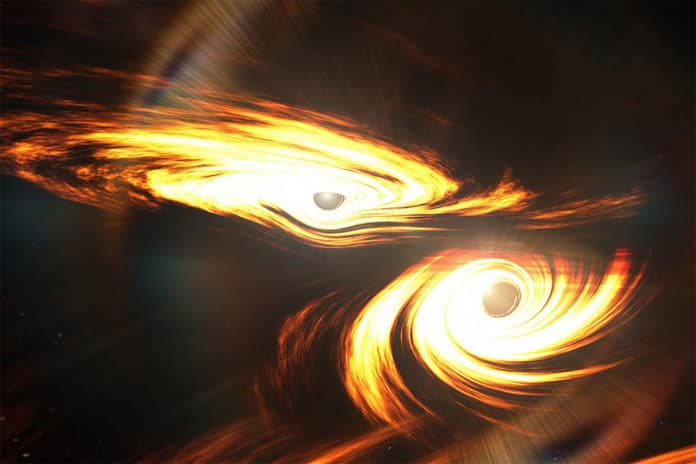For the first time, scientists confirmed the detection of a merger of two black holes with eccentric orbits.
The eccentricity of binary black holes: the orbit’s shape is formed when two black holes merge. This eccentricity indicates that the black hole continuously swallows others during chance encounters in areas densely populated with black holes such as galactic nuclei.
GW190521 is the heaviest black hole merger detected so far. Scientists from Rochester Institute of Technology’s Center for Computational Relativity and Gravitation and the University of Florida studied this merger to determine if the merger had eccentric orbits.
The team determined if the black holes had highly eccentric orbits before they merged to give this concept a new idea. Scientists found that a high-eccentricity, precessing model best explains the merger.
The team achieved their results by performing several numerical simulations in local and national lab supercomputers, taking nearly a year to complete.
Professor and CCRG Director Manuela Campanelli, Associate Professor Richard O’Shaughnessy said, “This represents a major advancement in our understanding of how black holes merge. Through our sophisticated supercomputer simulations and the wealth of new data provided by LIGO and Virgo’s rapidly advancing detectors, we are making discoveries about the universe at astonishing rates.”
An extension of this analysis by the same RIT and UFL team used a possible electromagnetic counterpart observed by the Zwicky Transient Facility to compute independently the cosmological Hubble constant with GW150521 as an eccentric binary black hole merger.
Journal Reference:
- V. Gayathri et al., Eccentricity estimate for black hole mergers with numerical relativity simulations, Nature Astronomy (2022). DOI: 10.1038/s41550-021-01568-w
- V. Gayathri et al., Measuring the Hubble Constant with GW190521 as an Eccentric black hole Merger and Its Potential Electromagnetic Counterpart, The Astrophysical Journal (2021). DOI: 10.3847/2041-8213/abe388
